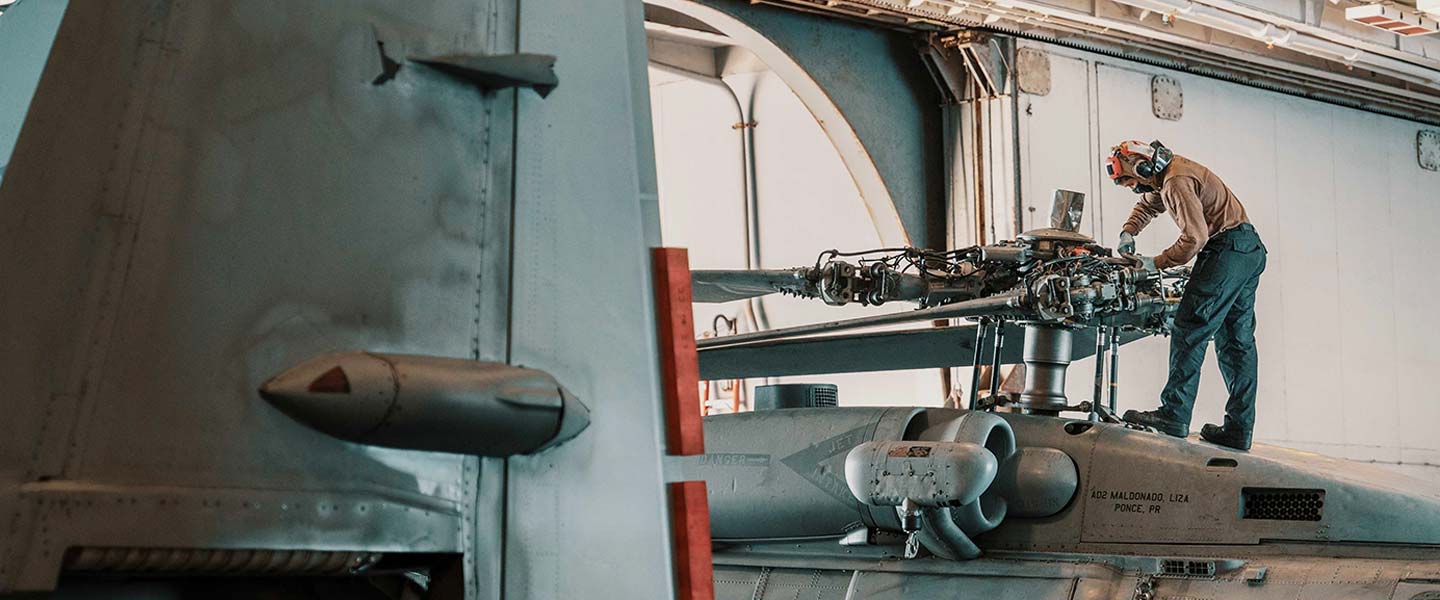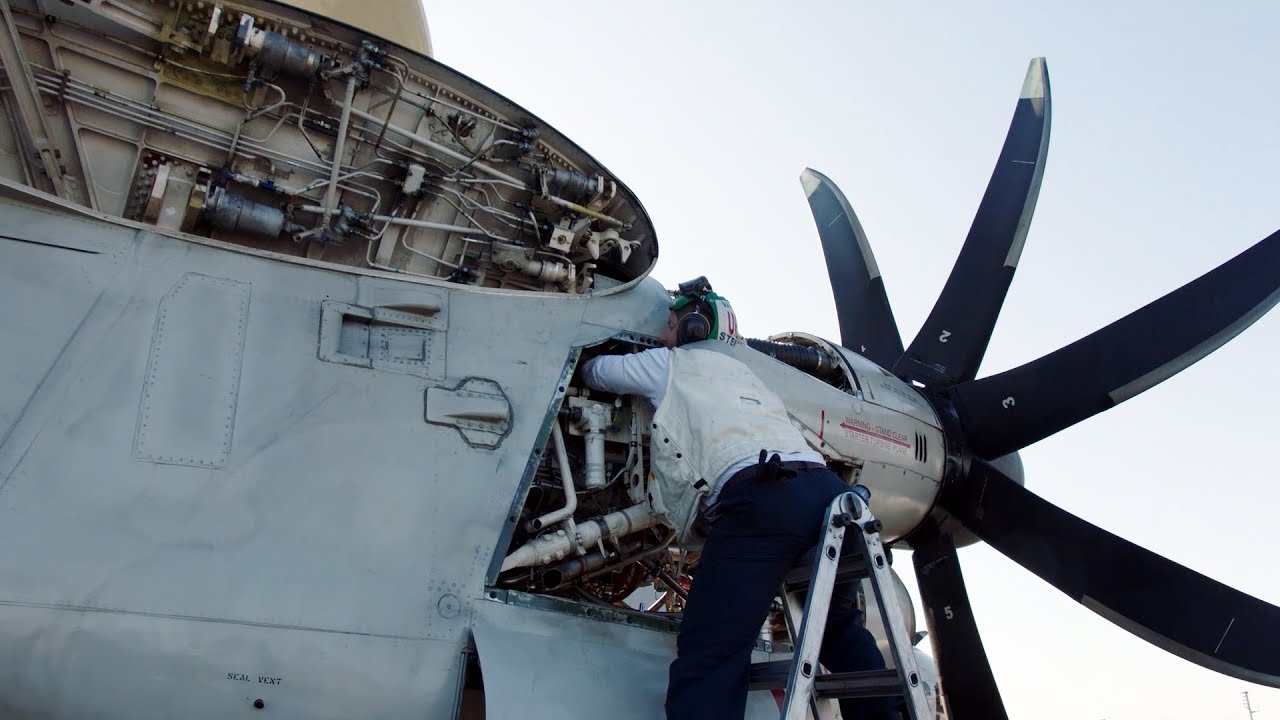What to Expect
More Information
Responsibilities
Aviation Structural Mechanics (AM) maintain and repair all aircraft structural components, from the cockpit control panels to the landing gear and everything in between. As an AM Sailor, your responsibilities may include:
- Maintaining and repairing onboard systems, such as hydraulic pumps, auxiliary power systems and more
- Maintaining aircraft landing gear, brakes, pneumatic systems and related components
- Performing regular service on pressure accumulators, emergency air bottles and more
- Inspecting and replacing hydraulic system components
- Repairing aircraft fuselage, wings, airfoils, seats, wheels and tires, controls and mechanisms
- Installing and rigging aircraft flight control surfaces
- Assembling metal components to make repairs to aircraft exterior
- Performing daily, preflight, postflight and other types of aircraft inspections
- Volunteering to serve as aircrew in turbojets, helicopters or propeller aircraft
Work Environment
AMs may be assigned to sea or shore duty any place in the world, so working environments may vary considerably between assignments. In this role, you may be assigned to hangars, aircraft carrier flight decks, or even flight lines at air stations. AMs who volunteer as aircrew may work aboard aircraft. Loud noise is a normal part of an AM’s job, and you can expect to perform physical work as part of a team.
Training & Advancement
Upon completion of initial training at Recruit Training Command Great Lakes (known as Boot Camp), you’ll report for specialized training, including:
Class "A" Technical School (9 weeks) in Pensacola, FL, for training in basic aviation structural mechanics, aviation theory and relevant skills.
After you complete your training, you may be assigned to an aviation squadron, an aircraft carrier, a naval air station or other aviation shore facilities in the U.S. or overseas.
Each time you are assigned to a new unit, you will return to school for specialized training on equipment and aircraft you are unfamiliar with. Promotion opportunities are regularly available but competitive and based on performance.
Advanced Training
Advanced training as an Aviation Structural Mechanic may also be available during later stages of your career. For those with further leadership aspirations and a college degree, Officer roles may be available, providing opportunities to lead and train others.
Post-Service Opportunities
Specialized training received and work experience gained in the course of service can lead to valuable credentialing and occupational opportunities in related fields in the civilian world, such as employment with airlines, airports, aircraft manufacturers and more.
Education Opportunities
Beyond offering access to professional credentials and certifications, Navy technical and operational training as an Aviation Structural Mechanic can translate to credit hours toward a bachelor’s or associate degree through the American Council on Education.
You may also continue your education through undergraduate degree opportunities like the Navy College Program and Tuition Assistance and the Post-9/11 GI Bill.
Qualifications & Requirements
A high-school diploma or equivalent is required to become an Enlisted Sailor and an Aviation Structural Mechanic. You must also be a U.S. citizen eligible for security clearance.
AM applicants should possess an aptitude for using tools and equipment, and the ability to perform detailed work and keep accurate records. You should also be able to get along with others and work well as part of a team.
Important physical traits include normal use of your hands, a high-level of physical fitness, and normal hearing and color perception.
General qualifications may vary depending upon whether you’re currently serving, whether you’ve served before or whether you’ve never served before.
Part-Time Opportunities
Serving part-time as a Navy Reserve Sailor, your duties will be carried out during your scheduled drilling and training periods. During monthly drilling, Aviation Structural Mechanics in the Navy Reserve typically work at a location close to their homes.
For annual training, you may serve anywhere in the world, including locations in the U.S., at bases overseas, or in areas where humanitarian needs are great.
Take a moment to learn more about the general roles and responsibilities of Navy Reserve Sailors.
Most of what you do in the Navy Reserve is considered training. The basic Navy Reserve commitment involves training a minimum of one weekend a month (referred to as drilling) and two weeks a year (referred to as Annual Training) – or the equivalent of that.
Aviation Structural Mechanics in the Navy Reserve serve in an Enlisted role. Before receiving the ongoing professional training that comes with the job, initial training requirements must be met.
For current or former military Enlisted servicemembers, prior experience satisfies the initial Recruit Training requirement, so you will not need to go through Boot Camp again.
For those without prior military experience, you will need to meet the initial Recruit Training requirement by attending Boot Camp in Great Lakes, IL. This training course will prepare you for service in the Navy Reserve and count as your first Annual Training.

































































































































